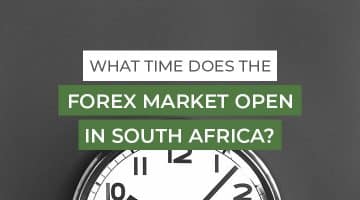Forex Continuation Patterns

In this article
The trading world is all about anticipating what’s going to happen. Then, based on our predictions, we take action to make as much profit as we can. To accomplish this, you need to constantly study the behaviour of trends.
One of the basic principles you need to fully understand is Forex continuation patterns. They help us predict that after a period of consolidation, the trend will continue its course or not.
What are continuation patterns?
The patterns are defined figures you can draw in the chart matching the highest and lowest price points during the consolidation.
Once the trader identifies a continuation pattern, the theory says that he’ll see a breakout with the same behaviour seen before the consolidation pause in the short run. This will continue after the consolidation phase if we had a strong uptrend before the pattern. But if the previous trend was downwards, the price would continue to go down after the pause.
Once the trader understands how the principles of this theory work, he can make his own strategy to get the maximum profit from the movement. As we’ll explain next, there is no one right answer on approaching the market movement.
Types of continuation patterns
Many people have different theories about continuation patterns. Depending on who you listen to, you’ll see several patterns, but there are some that everyone agrees on. These are:
- Triangles
- Flags
- Pennants
- Rectangles
Triangles
Triangles are famous continuation patterns. We have two main types of triangles discussed below.
Ascending triangle
This is a triangle where the highs can’t pass the resistance line and see higher lows. In all the triangles, because the lines that form it are converging, you can estimate the period where the price will be out of the formed figure.
How to play it: The trader has to play a long position and buy after the breakout. The moment to sell will be when the uptrend after the breakout equals the maximum height of the triangle.
Descending Triangle
It is characterized by a horizontal support line and lower highs. They are normally presented with a downtrend that, after presenting the ascending triangle, continues to be bearish. Descending triangles can be seen with upward trends, although these are less common.
Descending Triangle
For this to work, we need a downward trend before a triangle. Unfortunately, in sideways markets, this does not work because we cannot draw conclusions from it.
How to play it: Here, the trader will go short by selling an asset before it depreciates furhter. When depreciation has occurred, the trader can book profit. The time to exit is when the fall equals the maximum height of the triangle
Pennants
Pennants are another type of continuation patterns that predispose us to continue with the same trend. They are similar to triangles and are produced after a very intense, almost vertical movement. The difference between a pennant and a symmetrical triangle is the size. The flags are smaller triangles.
Bullish pennant Pattern
It mostly occurs in a strong uptrend. The pennant is formed from an upward flag pole. It is a consolidation period, and it shows a probability of continuation of the uptrend after a breakout. The formed triangle is small, so the breakout happens quickly.
Bullish Pennant Pattern
How to play it: The trader has to play a long position. Buy low after the breakout. The time to exit will be when the uptrend after the breakout equals the length of the pole
Bearish pennant pattern
It occurs in strong downtrends. Traders look for a break below the pennant to take advantage of the bearish momentum.
Bearish Pennant Pattern
How to play it: Here, the trader will go short before an asset depreciates. Then, when depreciation has occurred, the trader can exit the position with profit. The time to close the deal is when the downtrend after the breakout equals the length of the pole.
Now, in the previous image, we can see something called “pull back”. This pullback is one of the reasons why the strategy of each trader varies. For example, if a trader enters right after the breakout, he may be out of the trade if the pullback is enough to hit his stop-loss. So many traders wait the “pull back” and then enter. But there is a problem with that strategy. If there is no pullback, the trader waiting for it will be out of the trade.
Flags
Flags are another continuation pattern characterized by a strong move before the consolidation period. Flags are formed by two parallel lines going against the previous trend. The lines can also be horizontal.
Bullish flag pattern
After a strong uptrend, the lines of the flag in the consolidation phase will show a downtrend right before the breakout continues the uptrend.
Bullish Flag pattern
How to play it: The trader has to play a long position. Buy low after the breakout. The time to sell will be when the uptrend after the breakout equals the length of the pole.
Bearish flag pattern
It’s a downtrend followed by a small sideways movement against the trend during the consolidation phase. Finally, the pattern ends after the breakout continues its downward trend.
Bearish Flag Pattern
If we look at the image above, we can see that the trend goes down even lower than the target point after the breakout. Well, that’s because the theory gives us an estimate. The trend won’t be exactly what we expect, but it is a good approximation.
How to play it: Here, the trader will go short by selling the asset before it depreciates. Then, when depreciation has occurred, the trader book the profit. The time to close the deal is when the downtrend after the breakout equals the length of the pole.
Rectangles
It is a continuation pattern where the lateralization of the consolidation stage is longer.
How to play it: It can be played in two ways.
1) During consolidation, you could sell once the price reaches the resistance line and buy when it descends to the support line
2) The breakout can also be operated as in the other patterns studied. However, in case you play the breakout, the target point will be when the uptrend reaches the rectangle’s height.
The difference between a rectangle and a horizontal flag is the length of the consolidation. The rectangle allows us to trade before the breakout.
Bullish Rectangle
In the case of rectangles, it is a little more uncertain whether the trend will continue or reverse. However, it is an important pattern to keep in mind.
If the trend is reversed instead of continuing, we simply act accordingly, adapting to the behaviour of the market.
Bottom line
The continuation patterns help us to predict the behaviour of the assets to design a good strategy. The most common continuation patterns are Triangles, Flags, Pennant, and Rectangles. We can play them no matter if they are bullish or bearish patterns.
One should keep in mind that we are not guessing whether the price will go up or down. During the consolidation period, we are not supposed to act (except in the rectangles). We are supposed to enter the game once we have seen that the breakout occurred as we were expecting it to happen.
Jason Morgan is an experienced forex analyst and writer with a deep understanding of the financial markets. With over 13+ years of industry experience, he has honed his skills in analyzing and forecasting currency movements, providing valuable insights to traders and investors.
Forex Content Writer | Market Analyst
Relevant Posts

What is Margin in Forex?
[top_three_brokers] What is margin in Forex and how to avoid receiving a dreaded margin call…
Read more
Forex Trading Volumes – What Is It And How To Use Them
[top_three_brokers] The abbreviation VSA stands for Volume Spread Analysis — the analysis of changes in…
Read more

What is Leverage in Forex?
Have you opened a new trading account and want to understand Leverage in Foreign exchange?…
Read more

Tick Chart Explained
[top_three_brokers] As a trader, you use a wide variety of charts to analyse markets. If…
Read more

Market Technical Analysis
[top_three_brokers] Whenever someone starts their trading journey, they open a chart, and clouds of disbelief…
Read more

What Time Does the Forex Market Open in South Africa?
[top_three_brokers] There are four major Forex centres worldwide: New York, London, Tokyo, and Sydney. Because…
Read more

Should I Use a No Deposit Bonus?
[top_three_brokers] The term “no deposit bonus” refers to the fact that new traders can open…
Read more

Trading the Currency Market – Best Practices
[top_three_brokers] Trading the currency market can seem like a daunting task if you don't know…
Read more

What is Swap in Forex?
[top_three_brokers] Have you been looking at opening a trading account and found yourself puzzled, trying…
Read more

Best Trading Platforms Reviewed
[top_three_brokers] Naturally, many traders are interested in learning about the best trading platform. One of…
Read more

What is Margin in Forex?
[top_three_brokers] What is margin in Forex and how to avoid receiving a dreaded margin call…
Forex Trading Volumes – What Is It And How To Use Them
[top_three_brokers] The abbreviation VSA stands for Volume Spread Analysis — the analysis of changes in…

What is Leverage in Forex?
Have you opened a new trading account and want to understand Leverage in Foreign exchange?…

Tick Chart Explained
[top_three_brokers] As a trader, you use a wide variety of charts to analyse markets. If…

Market Technical Analysis
[top_three_brokers] Whenever someone starts their trading journey, they open a chart, and clouds of disbelief…

What Time Does the Forex Market Open in South Africa?
[top_three_brokers] There are four major Forex centres worldwide: New York, London, Tokyo, and Sydney. Because…

Should I Use a No Deposit Bonus?
[top_three_brokers] The term “no deposit bonus” refers to the fact that new traders can open…

Trading the Currency Market – Best Practices
[top_three_brokers] Trading the currency market can seem like a daunting task if you don't know…

What is Swap in Forex?
[top_three_brokers] Have you been looking at opening a trading account and found yourself puzzled, trying…

Best Trading Platforms Reviewed
[top_three_brokers] Naturally, many traders are interested in learning about the best trading platform. One of…








